The Politie afdeling luchtvaart also known as Dienst Luchtvaartpolitie (Police Aviation Service) is a branch of the Dutch National Police Corps, providing police aviation services throughout the Netherlands with its nine-strong fleet of EC135s and AW139s.
The Fleet Now and Then
The first national police aviation unit in the Netherlands was established at Schiphol International Airport in 1953. Investigators from the Aviation Police Department of the National Police Corps patrolled airports and checked for the possession of such prohibited items as weapons, explosives or drugs. The flight service started with two Cessna aircraft and later two BO-105 helicopters, mainly patrolling almost without interruption over the highways. During the ensuing almost seventy years, assorted fixed-wing aircraft and helicopter types have seen service including the Auster MK3, Cessna 172, Cessna 337 Super Skymaster, Pilatus Britten-Norman BN.2T Turbine Islander, Cessna 182, Sud Aviation Gazelle, MBB Bo105, Bell 206 Jetranger, AS350-B2 and McDonnell Douglas MD902. The current fleet consists of six Eurocopter EC.135s and three Agusta Westland AW.139s. The last fixed-wing, an aging Cessna 182, was taken out of service in 2014 due to the high cost of impending major maintenance and overhaul. In 2009 the six Eurocopter EC135s (PH-PXA to PH-PXF) replaced seven MBB Bo105s, and two Agusta Westland AW139s (PH-PXY and PH-PXZ) were subsequently added to the fleet in 2009. The fleet was expanded in 2019 with a third AW139 (PH-PXX). With these nine helicopters, the service maintains police aviation support over the Netherlands’ entire 16,000-odd square miles and the bordering sea coasts.
With the current fleet, the police aviation service is available for air support 24 hours a day, all year. The service’s Eurocopter EC135-P2+s can carry four to six people, boast a maximum take-off weight of 2,910 kg and are equipped with two Pratt and Whitney PW206B2 engines of 447HP each. The German/French manufactured type has a flight range of 635 km and a 2.5 hour endurance. Far less expensive to purchase than the larger AW139, the skid-equipped EC135 can be flown single-pilot and is easier to land in difficult terrain than the AW139 and its retractable, wheeled landing gear. Reduced start-up time, noise levels and downwash are additional advantages. The EC135s were purchased with the vision to fly the type operationally for the next 20-30 years.
Its bigger brother, the AgustaWestland AW139 can carry up to 15 passengers and is equipped with two P&W PT6C-67C engines of 1,679 HP each, with a maximum take-off weight of 6,800 kg. The Italian-made AW139 has a flight range of 1,061 kilometers (without reserve fuel), and about 4.5 hours endurance. The advantages of the AW139 over the EC135 are its higher speed, larger loading capacity and floats for over-water operation. The EC135, on the other hand, is not permitted to not operate more than six miles out to sea. The third AW139 acquisition was of a newer standard and specification than the earlier two examples, which will be brought up to the same standard as the newest aircraft.
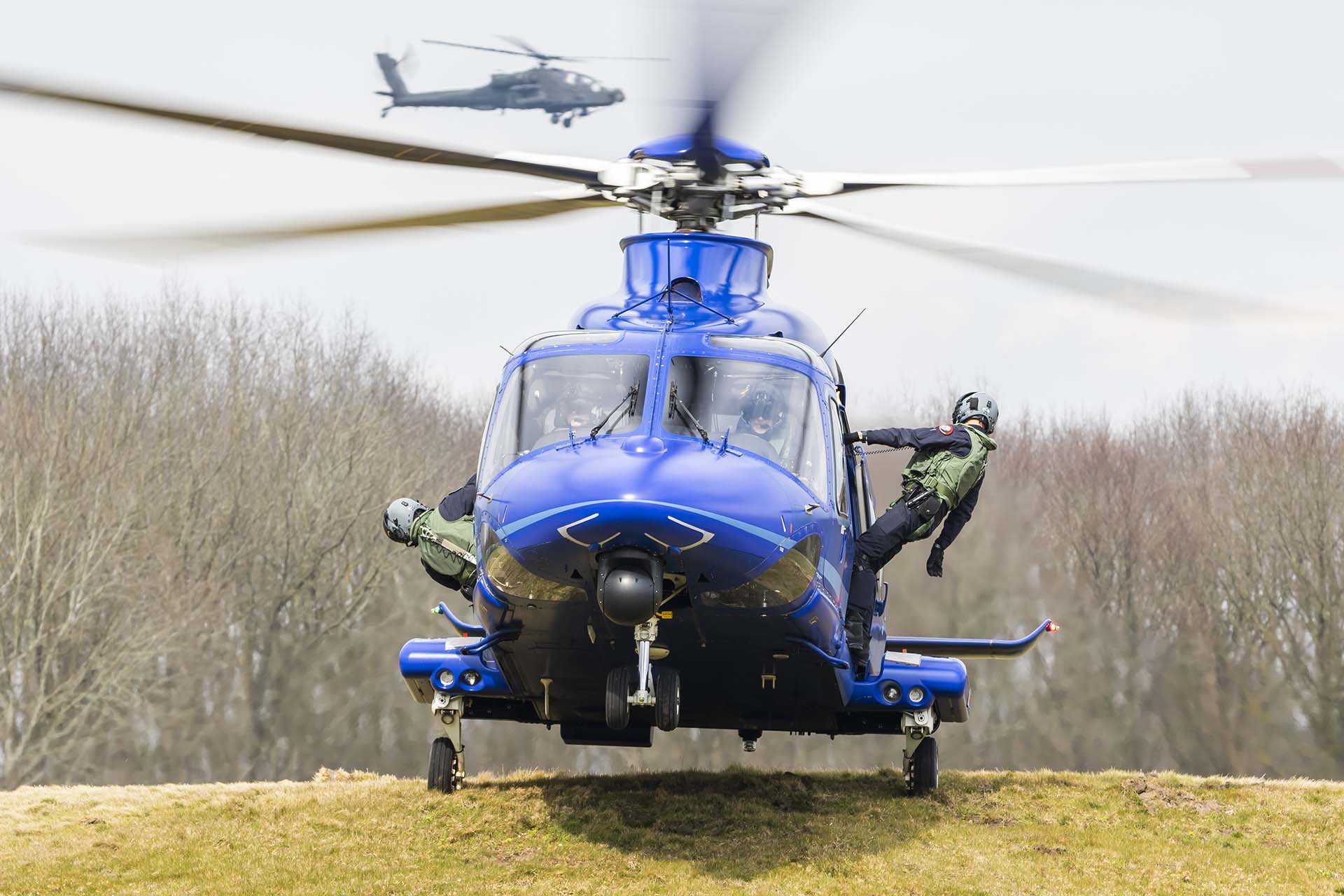
Bases
The helicopters have three locations, or support points, in the Netherlands; Schiphol International Airport (East), Rotterdam-The Hague Airport and Volkel Air Base. One of the shelters at Volkel Air Base is currently being used but, in collaboration with the ANWB-MAA ((ANWB-Medical Air Assistance) a medical H135 helicopter station 'Lifeliner3' ), a new hangar is being built where the trauma helicopter and police helicopter will be housed together. The technical service is also based at Schiphol and operates 24 hours a day, 365 days a year to ensure that the helicopter is thoroughly inspected before and after each flight and that any minor defects are immediately rectified. All scheduled and unscheduled routine maintenance and repair work is carried out at Schiphol East, other than the most major work. The EC135 fleet is currently receiving a midlife update. For this, they are flown to England one by one to be fitted with the latest equipment in and outside the helicopter, so that when this update is completed, all examples will be equipped to the same modern standard.
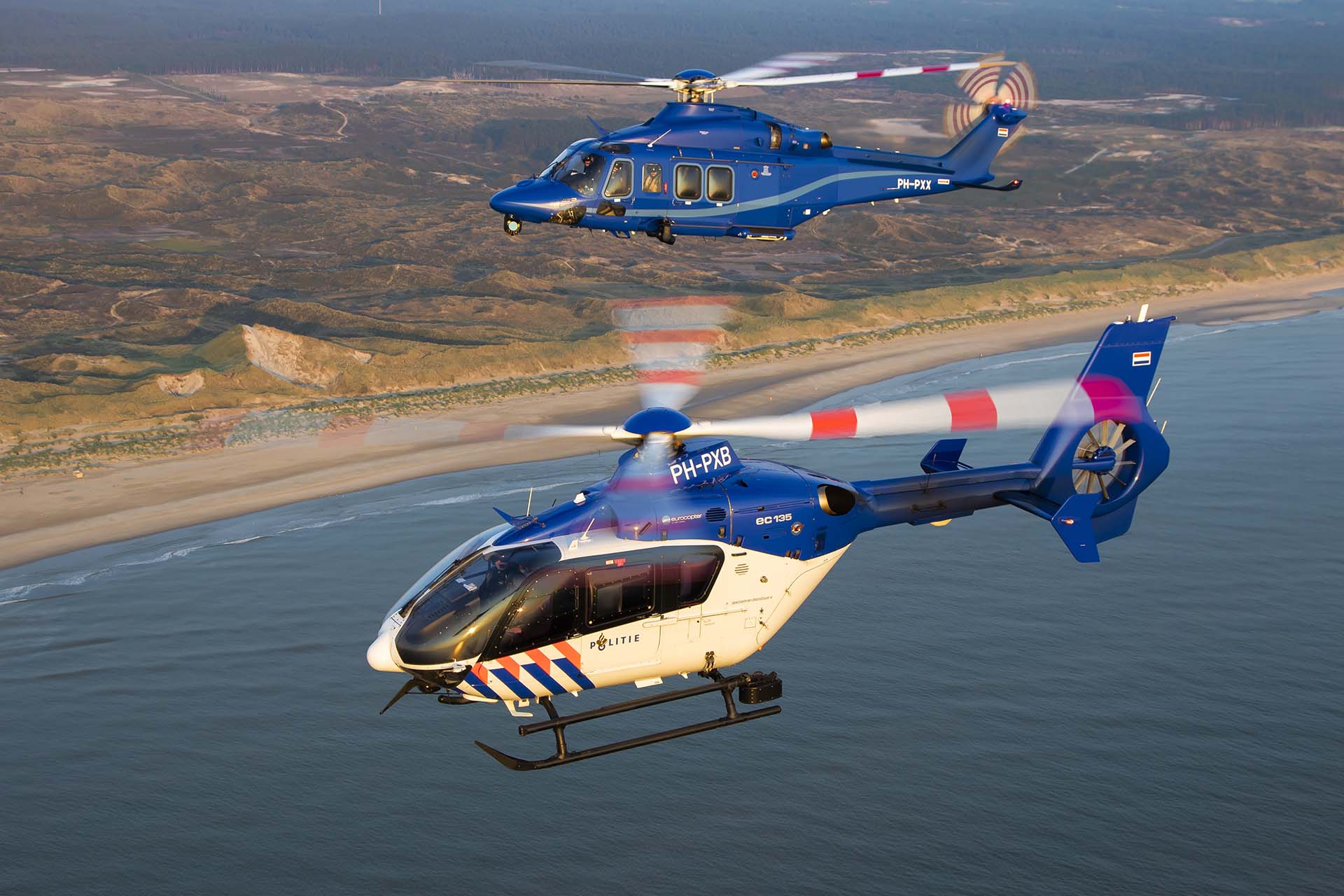
Duties
The police aviation support duties are varied and are adapted to the requests of the control room. The helicopters carry out daily surveillance flights over the Netherlands from each of the three bases and can therefore be deployed quickly for any emergency call-out or other request. During a regular daytime surveillance flight, an EC135 crew consists of a pilot and a TFO (Tactical Flight Officer), who operates the specialist mission equipment inside and outside the helicopter. An AW139 crew consists of two pilots and a TFO. Surveillance flights support ground units where they may need close air support, and multiple activities are often performed during these flights, such as monitoring traffic, mapping traffic jams, locating cannabis farms, oil and pollution flights or other policing-related tasks. For missing persons or other searches, police aviation support is also regularly called upon and can be utilized to take pictures of crime scenes or other locations of interest. In addition, the helicopter is often used for 'high impact crime' support, following get-away cars, or supporting at burglaries underway. In the past, the onboard, infrared and thermal image camera system has enabled the unit to provide location, mapping, and imaging support to the fire brigade in the case of large forest fires but the increasing use of drones has reduced the demand for this purpose. The police aviation service is also considering the possible purchase of Bambi buckets for the AW139s, to extinguish smaller fires.
Police ground units can call on aviation support via the control room in the National Unit located in Driebergen, utilizing the C2000 emergency services communication system. It is then determined whether helicopter deployment would make a difference in apprehending suspects or tracking the object or person. The aviation unit also collaborates closely with various partners such as the Coast Guard and the Special Interventions Service (DSI), for regular flights carried out with the AW139.

Special Forces
The Special Interventions Service (DSI, Dienst Speciale Interventies) is the Netherlands’ special forces service in charge of national operations of police and defense special units. It was established 01 July 2006 and currently fields about 550 soldiers and officers. It is part of the National Unit of the National Police that can provide a rapid, effective response to a terrorist attack or other form of violent disturbance to public order and security, for which the regular police are insufficiently equipped.
DSI personnel are recruited on a voluntary basis from Police and Defense ranks and, although there are no restrictions on women serving in the DSI, there are currently no women serving operationally due to the heavy physical demands. Within the DSI, police officers and military personnel work closely together. In no other country are units of both the police and defense under the same command, and all DSI personnel have the status of ‘special investigating officer’. Police arrest teams (referred to as AOTs, or Arrest and Support Teams) became part of the DSI in the 2013 reorganization of the police force. Since then, there have been three main components to the DSI operational structure; the Arrest Teams (AOTs), Intervention (AI) and the Expertise & Operational Support (AE&OO) directorates. The AOT directorate accounts for roughly eighty percent of the work. Three medium-heavy helicopters are at the DSI’s disposal to quickly deploy the Quick Reaction Air (QRA), transporting sufficient personnel and striking power throughout the Netherlands in law enforcement and life-threatening circumstances. The police aviation service AW139s are used for this and to transport DSI’s dangerous suspects, or conduct surveillance flights, ground support flights and other medium-heavy assignments.
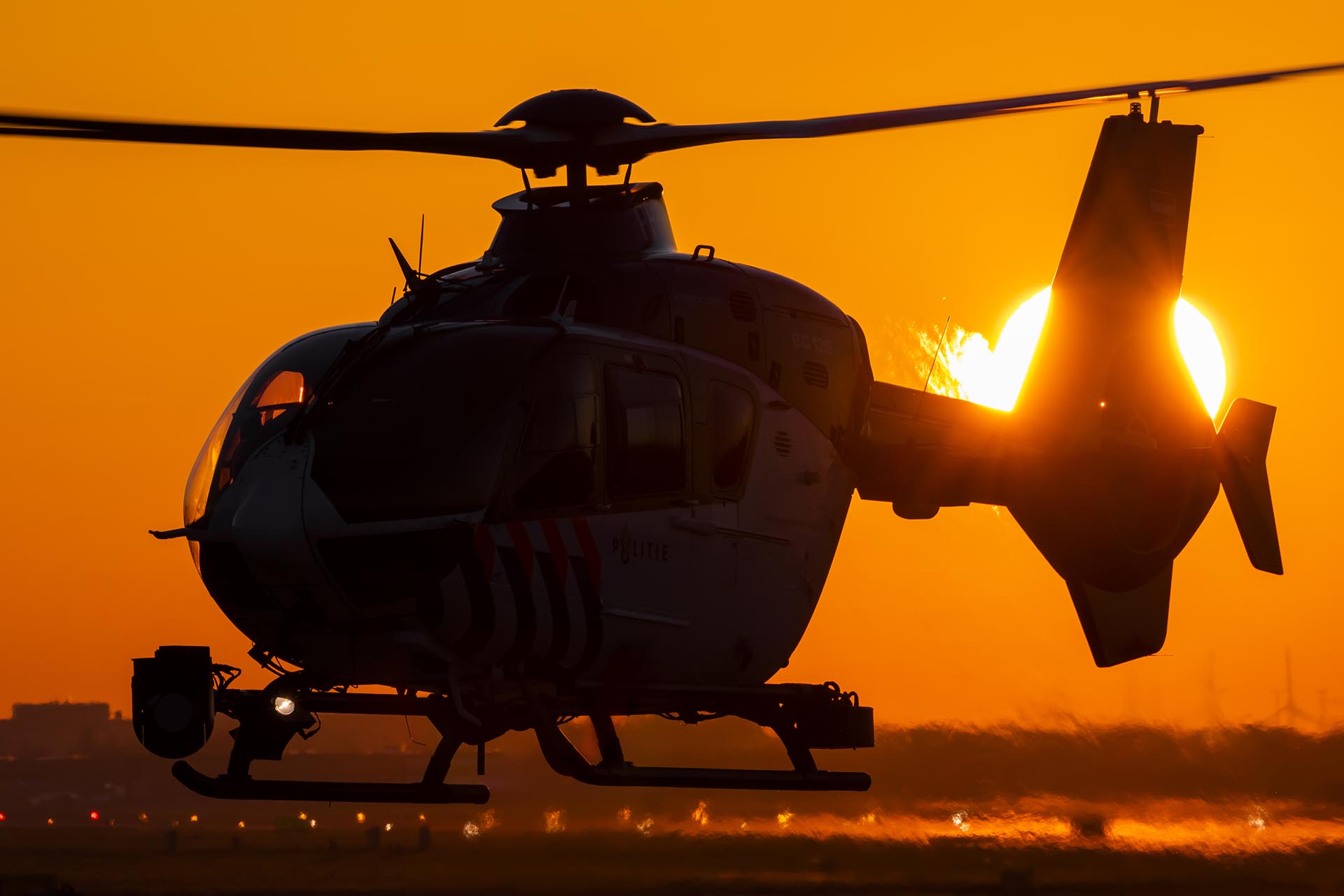
Surveillance
The EC135s also conduct surveillance and ground support flights, and carry out other, lighter assignments. Police Aviation Service helicopters are also used for surveillance for detecting cannabis farms and XTC labs and for various specialist (secret) police teams such as the DSI.
Flights are also carried out for the Coast Guard, searching off the coast and checking the waterways for illegally dumped or discharged (drug) waste. A Coast Guard employee is always carried during these flights. In addition to air support tasks, the police aviation service also has a special ground surveillance team, the Aviation Supervision Team.
This Team deals with aviation accidents and incidents, and monitors airports with regard to such regulatory matters as flight preparation and alcohol checks before flight. Formation training is conducted every year at the beginning of the summer and comprises several flights over a period of weeks. The service’s pilots must be competent at formation flying as several aircraft may formate during missions, mainly when transporting serious criminals or the Special Intervention Service (DSI). Typically, an AW139 transports people, accompanied by an EC135 or AW139 with a sniper on board, to get suspects or the DSI to a scene quickly and safely.
The Police Aviation Service have the same skills and authorities as police officers on the ground. For example, they are authorized to hand out fines and, if necessary, they can offer help on the street to colleagues on the ground or to patients with a first aid kit and AED-kit on board. The Police Aviation Service operates in areas where people often have to deal with high risks.
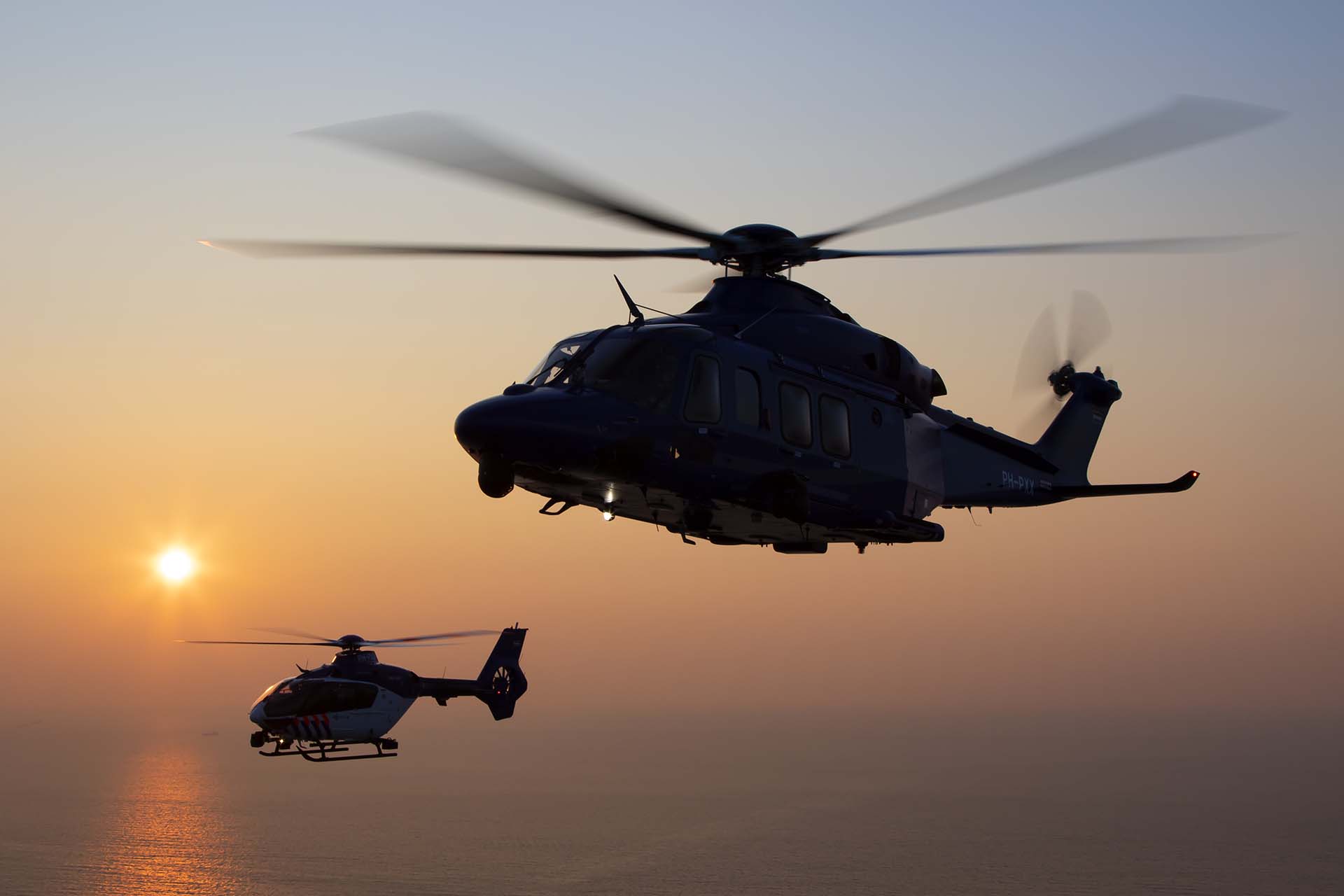
Flying functions within the unit include pilot, TFO (Tactical Flight Officer) and Dispatcher The pilot is responsible for the safe flight direction and the TFO is responsible for the operation A pilot can apply to the Aviation Police both in the police force and outside the police force, for this position the work previously served as a police officer on the street is of less importance. Many police aviation service pilots are former air force pilots with experience in different helicopter types within the armed forces. Police aviation pilots train at a civilian training school in the Netherlands while employed by the police. After the CPL(H) comes training for instrument and type ratings. A pilot must have at least a CPL(H) and have passed ETPL theory before moving on to police flying. They are also assessed as to whether they can fit into the group and be as adaptable and flexible as the mission requires. The Police Aviation Service is ATO certified by EASA and provides instrument ratings, type ratings and NVG (Night Vision Goggle) training internally at Schiphol East to the police standard. Afterwards, and under the guidance of an instructor, pilots are given a number of exercises that fall outside the type rating, such as foreign or precautionary landings. After this training is completed, pilots are linked to a mentor and go through all facets of police work, with the mentor checking, monitoring and giving tips and tricks through three phases, each with a higher difficulty level. Police pilots become operational after completing the final phase.
The TFO operates in the cabin, using various camera systems to provide images for air or ground troops, and communicating with ground troops to provide them an overall picture. The Dienst Luchtvaartpolitie may be relatively small by some international standards, but it is a well-equipped unit with modern, capable aircraft and well-trained, capable personnel that provides a full law enforcement aviation service to the Netherlands. The TFO also is responsible for the helicopter cabin and directs the units on the ground to the target. He tells the course and target to the pilot. Making the tactical considerations, the TFO also takes the pictures from the air, with thermal DSLR cameras if necessary. If the pilot notices something remarkable, this will always be communicated to the TFO in order to give a good picture of the situation. This is how the tasks are divided. During the training process you make the choice for which type of helicopter you want to be trained. The activities per type therefore differ, but the training is the same. A TFO is basically trained as a police officer. The team do not learn police tasks in the helicopter, but applies what they have learned on the street.
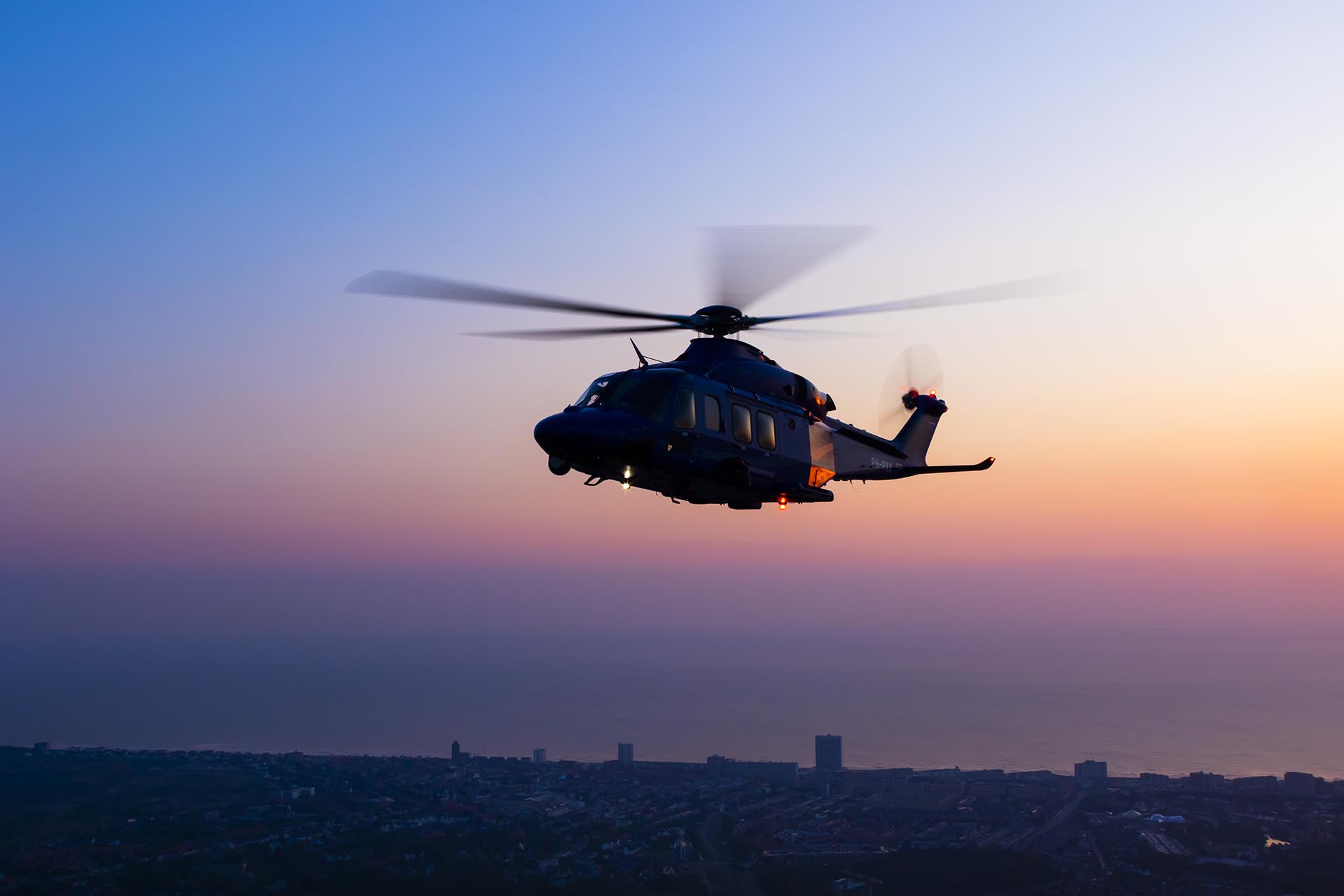
Still Police
The crew is also equipped with handcuffs, baton and handgun. As a TFO it is important to be able to make connections quickly, not to have a fear of flying and how to deal with the camera systems. Many officers want to follow the training to become a TFO, but a heavy selection process as the Aviation Police wants the best of the best TFOs in the training system.
The challenge of working for the Police Aviation Service lies in switching quickly, for example, police work is running and standing still. The Aviation Police is available to take action 365 days a year, 24/7. When it gets dark, the police helicopters come into action more often as this is when the criminals are active. The communication between ground and air units also poses challenges. For example, the TFO officer must provide a description of the environment and where the suspects are moving so that the ground units can see at a glance what the TFO means.
The helicopters are equipped with 360 degrees FLIR-cameras, infrared and thermal image camera systems to provide location, mapping, and provided with (car)tracking and imaging support. Some of the EC 135 fleet are equipped with a PA-system, a sound system attached to the helicopter. This allows the crew to talk the suspects to a stop. This installation is also equipped with an American-sounding siren to scare suspects. A searchlight is mounted on the other side of the helicopter, on both types of helicopters. This allows the TFO to indicate and highlight places where agents on the ground are led. Suspects or missing persons can be exposed to easily get ground units to location. It also often scares bystanders and this has a positive effect on the work of the police.
The police helicopter has been deployed in large and complex actions. For example, the helicopter was used during the first COVID outbreaks in the Netherlands with looting in large cities in the Randstad. Among other things, the searchlight played a major role in highlighting suspects and deterring bystanders and removing them from the crowd.
Challenges also lie in operations they carry out, such as a robbery where people can be on the scene within seconds in an urban area and the control room reports that the suspects have just fled. It is up to the TFO, in collaboration with the pilot, to operate the camera systems to get a good picture of the current environment. The TFO scans the environment with his infrared and thermographic camera systems and what is striking is that many people look up at the police helicopter; people that do not look up makes them suspicious and after a few minutes they start to run. The TFO officer has to make and report assessments partly due to his police experience gained during the basic police training. The suspects are apprehended by units on the ground and taken to the police station, after which the police helicopter can continue its route. The TFO person prefers to let the helicopter kep moving during operations, but sometimes he needs it to hover in order to film a certain angle of, for example, a building. This is a tactical consideration in which one chooses a position taking into account the wind, and the sound it spreads. The police helicopter has an exemption for low-flying and landing anywhere in the Netherlands.
